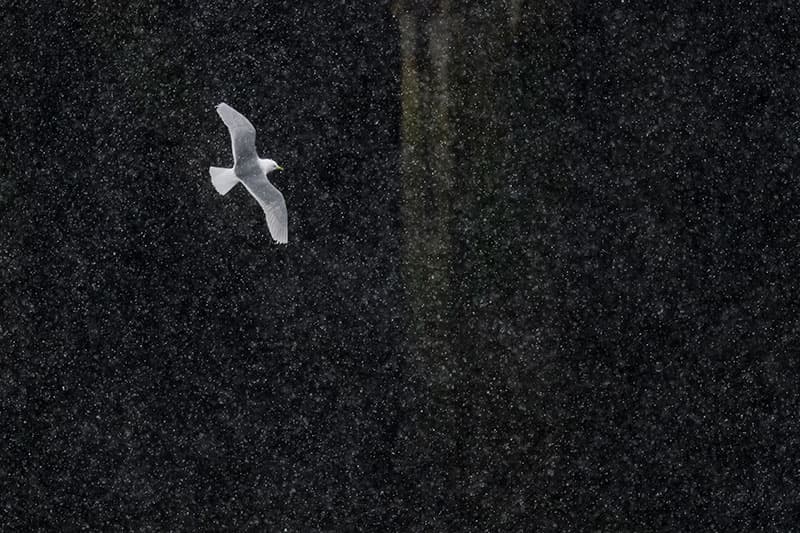
Shooting in the winter months means you don’t have to wake up at a ridiculous hour. Nikon D850, 400mm, 1/1600sec at f/4, ISO 2500. Credit: Oscar Dewhurst
Winter is a great time for bird photography. The low sun means you can photograph throughout the day, and the prospect of frost and snow should make any wildlife photographer lick their lips. At this time of the year, many birds look fantastic in bright plumage, having come through a moult at the end of the breeding season. The harsh weather conditions and subsequent difficulty in finding food means they can be more approachable, and handouts can be used to attract them. Perhaps my favourite thing about photographing in winter, however, is that sunrise is at a much more respectable time, so you don’t need to drag yourself out of bed at a ridiculously early hour.
During winter, the angle of the sun is low throughout the day, meaning you are freer to shoot in the middle of the day without worrying about harsh light and loss of details in shadow and highlight areas, as would occur in summer. Despite this, I would still recommend trying to be out for sunrise, as the quality of light is still better, and bird activity levels are higher. They need to feed to replenish energy resources lost overnight. Shooting at this time (or towards sunset), when the sun is nearer the horizon, means you can experiment with different light angles too. Side lighting and backlighting can be very effective, and you’ll capture images that will stand out from others. Heavy frost and backlighting, in particular, is a great combination.

Give some thought to your subject’s background. Nikon D850, 400mm 2x, 1/640sec at f/7, ISO 3200. Credit: Oscar Dewhurst
Watch the weather
Nearly all wildlife photographers I know will be hoping for frost and snow in which to shoot over the winter. Watch the weather forecasts and plan accordingly. Frost will often disappear soon after the sun hits it, so you may need to be out early to take advantage of this. Snow is another aspect that makes me look forward to winter, although again it’s important to plan ahead and pick one species to focus on. Otherwise it’s easy to end up rushing around trying to photograph everything when it does come, which can result in a few mediocre images. It’s much better to focus on something, and end up with just a couple of good images.
In snowy conditions, local knowledge can be invaluable. Travelling further afield can be risky, particularly if road conditions are dangerous. Having good local knowledge also means you will have an increased chance of getting images as you will know what you can find, and where. During the heavy snowfall in London at the start of 2013, I headed straight to where I knew I would find foxes, as I had been photographing them for the previous few months. It can be very dispiriting to have fantastic conditions but no subject in which to photograph them, so working out where you will go in advance is definitely worth it.

In snowy conditions, head to a local area where you know you’ll find suitable subjects to photograph. Nikon D850, 400mm, 1/1250sec at f/6.3, ISO 2000. Credit: Oscar Dewhurst
Camera settings
For most wildlife photography, I use aperture priority, my fastest frame rate and single spot autofocus. I have found this combination to work best for me, but others will have their own preferences. In some cases, however, I will modify these, such as when shooting in snow. Being very light, a camera exposing for snow can result in an underexposed subject. There are two ways to rectify this. First, you could use spot metering, so the camera will meter off wherever your focus point is. The other option is to use manual exposure, whereby you take an exposure reading off something else neutral, such as grass or trees, and dial that in. Make sure you check the resulting images on the back of the camera, as well as the histogram, so you end up with the correct exposure. Obviously if shooting in this mode and the light changes, you will need to change your exposure manually. I often tend to overexpose images slightly in snow to get the subject correct, and then dial back the brightness of the snow in post-production.

Try shooting silhouettes at sunrise to capture an atmospheric portrait. Nikon D800, 400mm, 1/5000sec at f/4, ISO 500. Credit: Oscar Dewhurst
Image variety
You can capture a huge range of images of birds in winter. Many birds have recently come through their post-breeding moult, so can look fantastic as they start to think about courtship and displaying to attract a mate. As well as the traditional frame-filling images of birds, consider making images that show more context. Winter landscapes can be very pretty, and images showing wildlife in its beautiful winter environment can be quite evocative. They are harder to capture than frame-fillers, but are well worth the effort when it comes off, and can be far more memorable.
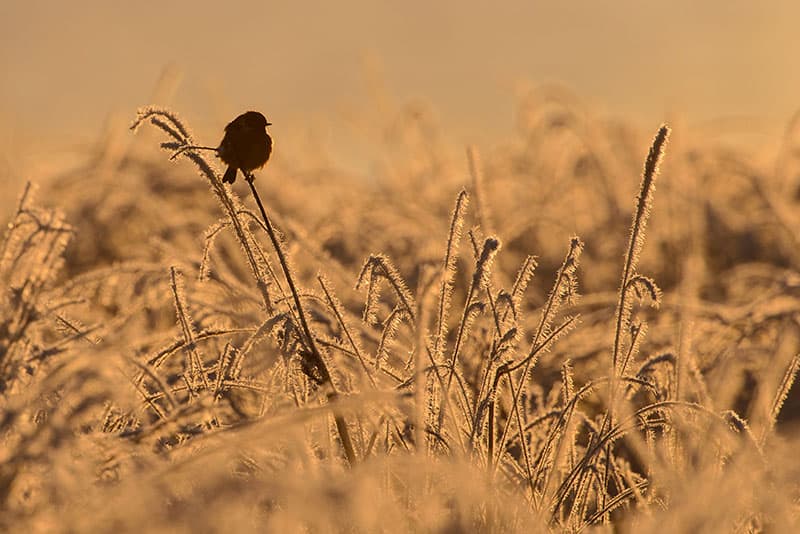
Make the most of frosty conditions before the sun rises. Nikon D800, 400mm, 1/2500sec at f/8, ISO 640. Credit: Oscar Dewhurst
Ethics
I mentioned this in June when I wrote about photographing birds in the summer (Birds of summer, AP 16 June), but it applies all year round. In addition to the issues I raised then, about aspects such as baiting (both live and non-live), captive subjects and digital manipulation, it is worth remembering that winter is often a hard time for wildlife, particularly when temperatures drop below freezing, with scarce food resources, and birds are ultimately fighting to survive. Therefore, be mindful not to flush them out or disturb them in your photography, as this is wasted energy that will need to be replenished. When approaching subjects, check for any signs of distress, and retreat if you think you are disturbing them. The welfare of the subject should always come first.
Top tips for photographing garden birds
- Put feeders out Winter is the best time to feed your garden birds. Put some feeders out with a variety of foods, such as sunflower hearts, peanuts and niger seeds (goldfinches love these).
- Position perches Once you have birds regularly coming to your feeders, position some perches nearby so they will land there on their approach, or while waiting for the feeder to become free.
- Backgrounds When positioning perches, think about what background you want, and adjust accordingly. If you cannot get a clear background, you could consider using an artificial background such as a print out of muted green or other colours.
- Use seasonal props There are a huge range of perches you can use, from various branches, to more artificial items like watering cans and garden tools. Be creative.
- Think about light Try to position yourself so the early-morning sun will be over your shoulder, showing off your subject perfectly.
- Experiment with light Try shooting into the sun too, for dramatic results that are a bit different.
- Wideangle lens A remote release and wideangle lens can give a different perspective, showing the birds in the context of their environment.
- Tripod Place your camera on a tripod and be ready in an instant when birds appear at your set-up.
- Bird behaviour Understanding bird behaviour will help improve your images. Make sure your perches fit with the subject’s natural behaviour, to keep your images looking natural.

Credit: Oscar Dewhurst
Why it works
A few years ago, I spent part of the winter photographing cormorants in one of the London parks. Despite not being the most glamorous location in which to photograph wildlife, one advantage is that birds are often more used to people here, so it is easier to get within photographic range. Fortunately, these cormorants were largely unconcerned by my presence, and I had a few very productive sessions with them. They spent a lot of time fishing up and down the water, at times very close to me. I had chosen my spot as it was underneath a bridge, so to expose the bird correctly, the water appeared almost jet-black in photos, and subjects stood out really well. One image I was very keen to capture was the moment a bird surfaced. Cormorants hunt for fish underwater, and when they come back up, the water runs off their face. It all happens pretty quickly though, so I had to be fast. Eventually I reacted well enough to capture this bird at the perfect moment; that it happened to be looking straight down the lens was a real bonus.
Birds to look out for during Winter
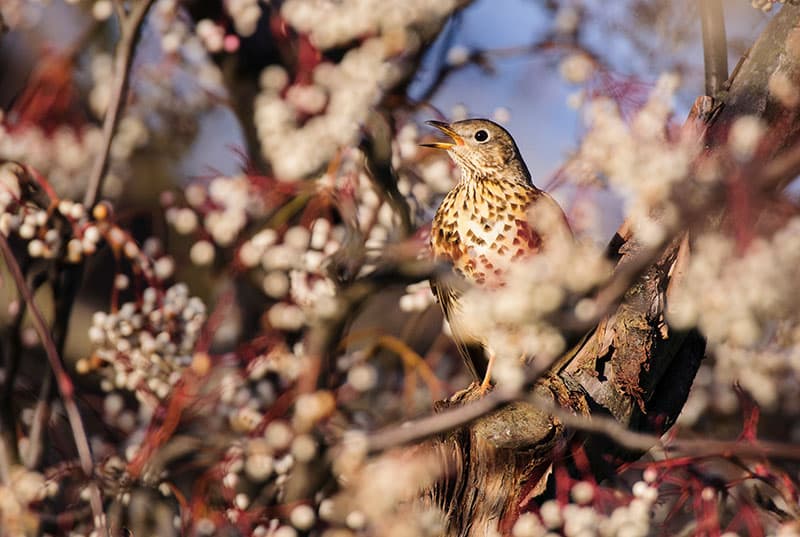
Credit: Oscar Dewhurst
Winter thrushes
Winter brings with it the arrival of migrant thrushes such as redwing and fieldfare to the UK from northern Europe. They congregate in groups, feeding in open grassy areas or on berry trees. You may be lucky enough to have them visiting your garden, in which case throw some apples out for them, and lie in wait.

Credit: Oscar Dewhurst
Wildlife in snow
If you are lucky enough to have some decent snowfall, it can make for fantastic images. Snow declutters the landscape entirely, and leaves the option of capturing high-key images of birds against clean white backgrounds. Cold snaps also bring more birds into gardens, giving you opportunities to control your images more.

Credit: Oscar Dewhurst
Waxwings
Waxwings are a favourite of mine, on account of their gaudy plumage and tolerance to a close approach from people. Their numbers vary year on year and they’re wonderful birds to photograph. Check local stands of berry trees, the twitter account @WaxwingsUK and your local bird-sightings page.

Credit: Oscar Dewhurst
Bitterns
The bittern is one of our rarest and most secretive birds. UK numbers are bolstered by the arrival of migrant birds from continental Europe in the winter. They feed in reed beds, and in cold conditions often become more visible as they are forced into the open to look for food sources elsewhere.
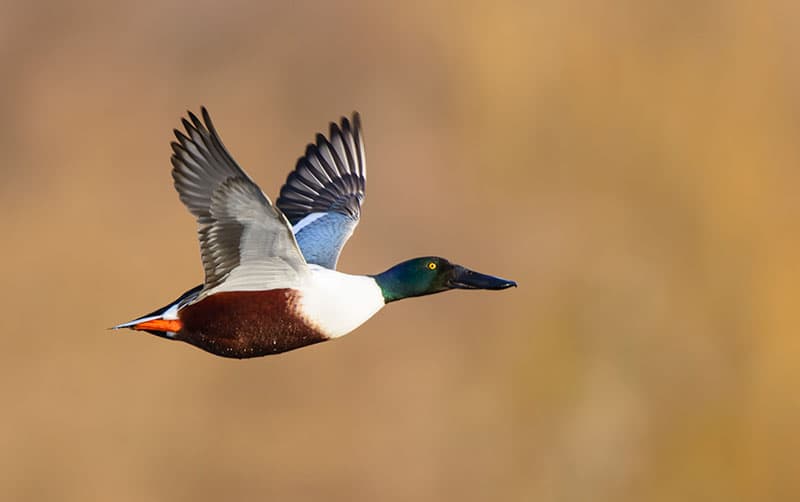
Credit: Oscar Dewhurst
Wildfowl
Drakes will be in their nest plumage, as the breeding season starts. There’s plenty of opportunity to shoot winter migrants, such as wigeon and teal, as well as those that are resident all year round. Slimbridge Wildlife and Wetland Trust in Gloucestershire, has huge flocks of ducks, as well as geese and swans.
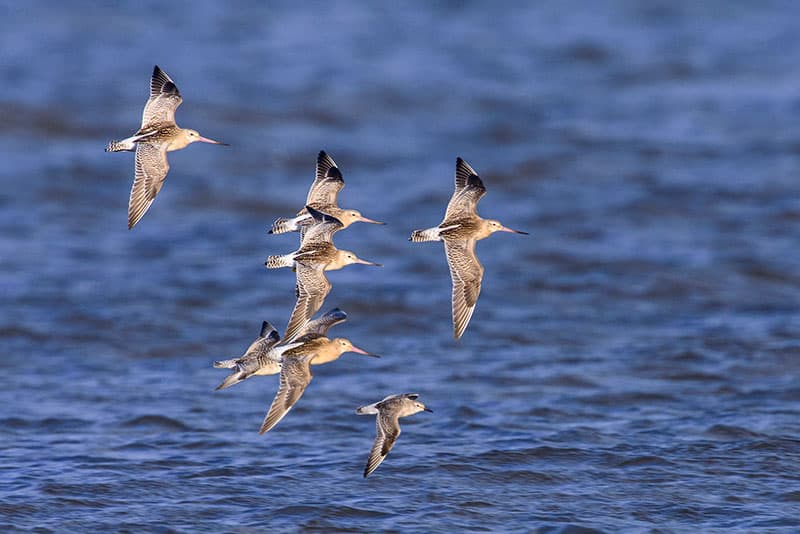
Credit: Oscar Dewhurst
Waders
The coast is a great spot in winter, with the large number of wader species that feed and roost there. Snettisham Nature Reserve in Norfolk has spectacular phenomenons at high tide when huge flocks of birds are pushed off the mud flats, but most of the coastline in the UK will have waders.
Kit list
- Binoculars I always carry my binoculars with me as they are much lighter than my camera set-up and clearer to look through than a viewfinder, so are invaluable for finding subjects to photograph.
- Telephoto lens A lens of at least 300mm will be required. I use a Nikon 400mm f/2.8, and I often add converters to get extra reach. Using a camera with a cropped sensor is a cheaper way to increase your lens’s magnification as well.
- Spare batteries In the cold batteries don’t last as long, so it’s always worth having a few spares with you. Try to keep them as warm as possible, so put them in pockets near your body to preserve them.
- Warm clothes These are essential for me. Sitting still in the cold is harder than just being out in it, and if you are wrapped up warm you will be able to stay out longer.
- Gloves A good pair of gloves is invaluable for photography in winter. Many photographers go for two pairs: a thin pair underneath and a thicker pair on top. When using the camera, remove the outer pair to leave a pair that still allows you to operate camera controls.
- Tripod leg wraps The legs of a tripod can get very cold. Putting foam leg wraps around them prevents this from happening, and your hands won’t freeze when carrying it around.







